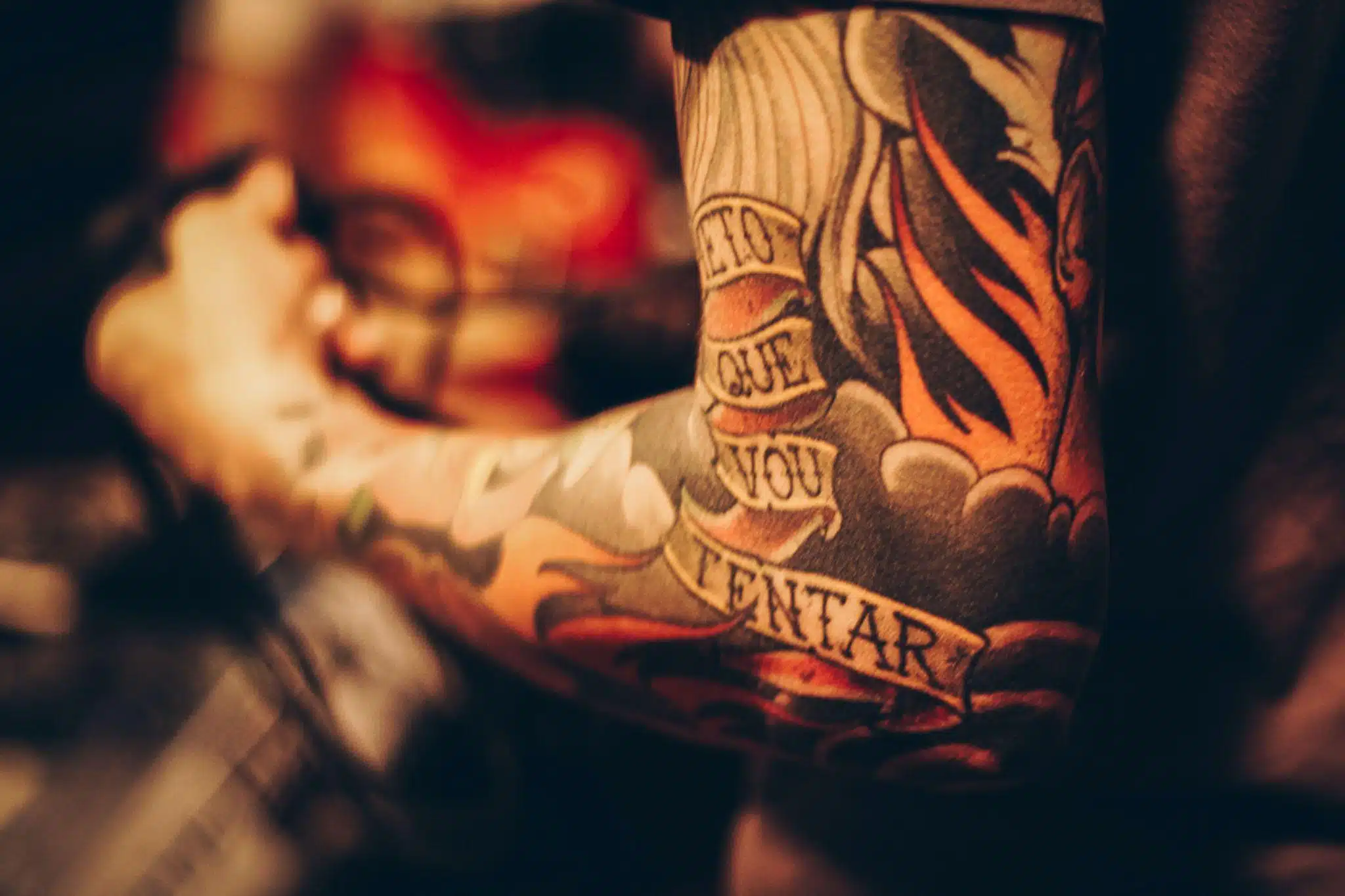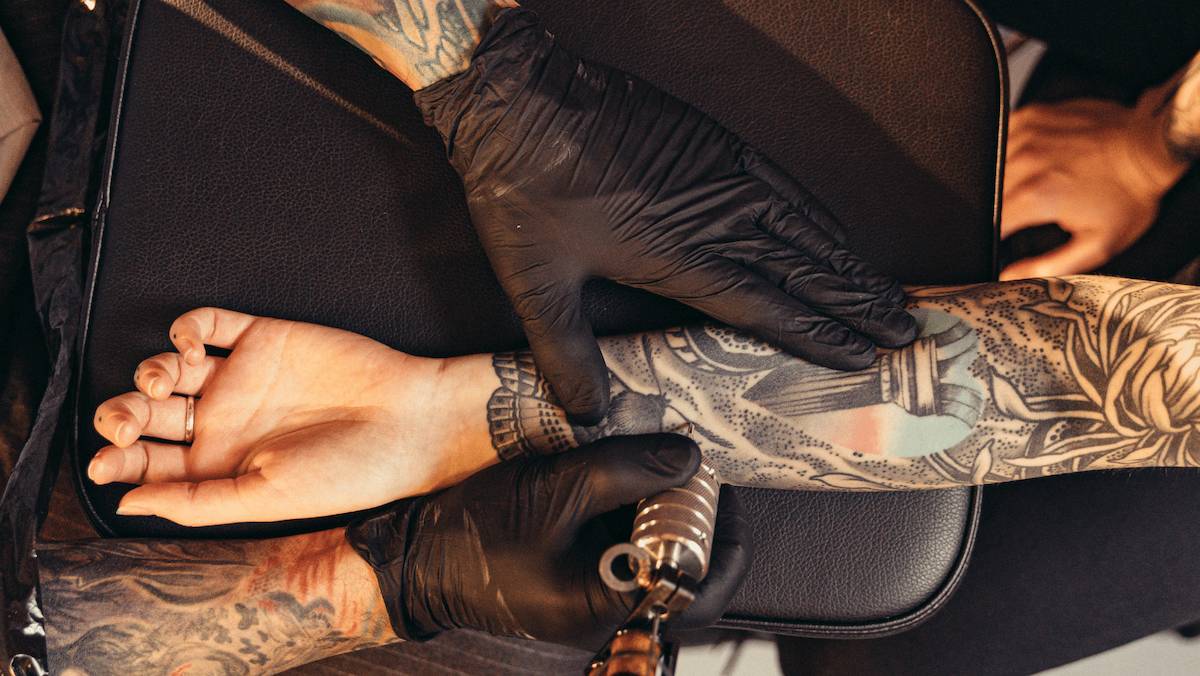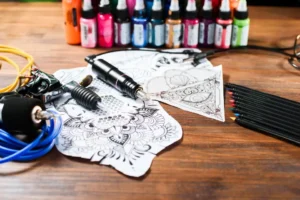
Getting a new tattoo can be an exciting experience but can also be daunting, especially regarding the healing process. One of the most common concerns during this process is tattoo swelling, which can cause discomfort and impact the final appearance of the tattoo.Fortunately, there are steps you can take to minimise swelling and ensure the best possible healing results.Taking care of tattoos before and after is really important for faster healing.This blog post will provide
expert advice on minimising tattoo swelling. We will share tips and tricks for pre-tattoo, during-tattoo, and post-tattoo care to help you achieve the best possible results.Let’s get into it:
Explanation Of Tattoo Swelling And Why It Occurs
Tattoo swelling is a
common reaction that occurs after getting a tattoo. The tattoo process involves inserting ink into the skin using needles, which creates a wound. This wound triggers a natural response from your body’s immune system, which sends white blood cells to the area to promote healing.One of the ways your body responds to this healing process is by causing the tattooed area to swell. Swelling occurs because your
blood vessels expand and allow more fluid to flow to the area, which causes the tissue to become inflamed and swollen. This can lead to discomfort and pain in the affected area and impact the tattoo’s final appearance.The severity of tattoo
swelling can vary depending on several factors, including the size and location of the tattoo, the technique used by the tattoo artist, and individual factors such as your age and overall health.While some swelling is a normal part of tattoo healing, excessive or prolonged swelling can indicate an infection or allergic reaction. A medical professional should address it.Taking steps to minimise swelling and promote proper healing after getting a tattoo is important. Proper aftercare, such as keeping the area clean and moisturised, avoiding excessive exposure to sunlight or water, and taking over-the-counter pain medications as needed, can help to reduce swelling and discomfort.
Tips To Help You Minimise Tattoo Swelling
Tattoo swelling can be
uncomfortable and inconvenient, but there are several steps you can take to minimise it and promote proper healing after getting a tattoo. Here are some tips to consider:
- Hydration: Drink lots of fluids and water in the days leading up to their tattoo session. This helps to keep the body hydrated and reduces the risk of swelling.
- Avoiding alcohol and caffeine: alcohol and caffeine have a lot of toxins, so it’s best to avoid them in the days leading up to the tattoo session. These substances can dehydrate the body and increase the risk of swelling.
- Healthy diet: Maintaining a healthy diet rich in fruits and vegetables and low in sodium is recommended to reduce the risk of swelling.
- Topical creams: Topical creams help reduce swelling. They help to soothe the skin and reduce inflammation.
- Rest: This is important in helping the body reduce stress and gain the strength it needs to promote faster healing.
- Applying cold compress: applying a cold compress to the tattooed area as soon as possible after the session can help reduce swelling and inflammation by constricting blood vessels.
- Keeping the area clean and dry: We advise keeping the tattooed area clean and dry to avoid infection, which can also contribute to swelling.
- Wearing loose clothing: Wear loose clothing to avoid rubbing the tattooed area, which can cause irritation and swelling.
- Proper aftercare instructions: Follow any aftercare instructions provided by your tattoo artist to accelerate your healing process.
By following these tips and our pre-tattoo care instructions, our clients can minimise tattoo swelling before their tattoo session and enjoy a smoother healing process.
Tattoo Aftercare Don’ts
Understandably, no one with a new tattoo intends to mistreat it. But even with all the excitement and grates intentions, you might hurt yourself.Here are some things you shouldn’t do when caring for your new ink work:
Don’t Dry A Healing Tattoo
While this is the most logical thing to do, it’s not advised. Drying a new tattoo might cause unnecessary itching. This, in turn, might tempt you to pick at or scratch it, which might cause scarring and alter the design or, worse, cause infections. Dry skin might also cause tightness and scabs, impacting your tattoo.
Don’t Use Loofah To Wash
Desist from using sponges, loofahs, wash clothes or other hard materials to clean your new ink. A new tattoo is essentially a wound; you must treat it as such. Using abrasive items will only cause it to bleed and bring more infections. Instead, use your hands and a gentle tattoo foam wash and let it air dry. Don’t forget to apply a moisturiser once dry.
Desist From Taking A Bath Immediately After Tattooing
We all want to keep clean but don’t put your new tattoo in bath water, hot tubs, saunas, swimming pools or any other open water source. All these sources contain bacteria and microorganisms that will cause infections. If you want to shower, pour lukewarm water over it instead.
Avoid Using Too Much Ointment
You only need a small layer of moisturiser and soothing balm for your new tattoo. Applying too much product may cause bacteria to be trapped underneath the fresh wound, delaying the healing process.
Avoid Scratching The New Ink
As mentioned earlier, tattoos are fresh wounds that may get itchy. This is a pro-tip, DON’T. If the urge is too strong, gently pat the area or apply a little more moisturiser.
Sunscreen Is Your Friend. Use It
We recommend that you always use sunscreen on your new ink. Strive for formulas with SPF 50 and above. Your new tattoo is still fresh and raw, so exposing it to direct sunlight will only aggravate the situation.Sunscreen can also help keep your tattoo fresh and bright as it sets into your skin, preventing colour fading and line fading. Choose tattoo-specific sunblock brands if possible.
Avoid Strenuous Exercises
Extensive exercise causes your muscles and joints to move excessively. Exercising repetitively can irritate new tattoos, causing the skin to become red and cracked and possibly prolonging the healing process. Take a couple of days off from the gym.
Do Not Shave Over The New Tattoo
There are many reasons why shaving over your new tattoo is not a good idea. Using a razor over a tattoo can lead to infection, so avoid shaving. Shaving over scabs can lead to infection again.
Do not Touch Your New Tattoo
Within eight to ten days, some of the side effects of the first week should subside. While discomfort may lessen, itching may continue or worsen for some people.Scabs may be falling off at this time, and itching is normal during this period. Anyone who has itchy skin and loosening scabs will want to pick at their tattoo area. But don’t! It’s important to leave your tattoo as untouched as possible. Picking at scabs can disrupt the healing ink,causing the tattoo to look distorted.
Wrapping Up
We understand that every individual’s skin and body reacts differently to tattoos, so you must remember that minimising swelling is tailored to each client’s needs.We hope that this article has been helpful. If so, please let us know in the comment section.
FAQS
How long does tattoo swelling last?
Swelling from a tattoo can last anywhere from a
few days to a
few weeks, depending on the individual and the size and placement of the tattoo.
Can I use a heating pad to reduce tattoo swelling?
No, it is not recommended to use a heating pad as it can increase blood flow and worsen swelling. Instead, use ice or a cold compress to reduce swelling.
How can I tell if my tattoo swelling is abnormal?
If your swelling does not go down after a few days or is accompanied by excessive pain, redness, or discharge, it may be a
sign of infection, and you should
consult a medical professional.  Getting a new tattoo can be an exciting experience but can also be daunting, especially regarding the healing process. One of the most common concerns during this process is tattoo swelling, which can cause discomfort and impact the final appearance of the tattoo.Fortunately, there are steps you can take to minimise swelling and ensure the best possible healing results.Taking care of tattoos before and after is really important for faster healing.This blog post will provide expert advice on minimising tattoo swelling. We will share tips and tricks for pre-tattoo, during-tattoo, and post-tattoo care to help you achieve the best possible results.Let’s get into it:
Getting a new tattoo can be an exciting experience but can also be daunting, especially regarding the healing process. One of the most common concerns during this process is tattoo swelling, which can cause discomfort and impact the final appearance of the tattoo.Fortunately, there are steps you can take to minimise swelling and ensure the best possible healing results.Taking care of tattoos before and after is really important for faster healing.This blog post will provide expert advice on minimising tattoo swelling. We will share tips and tricks for pre-tattoo, during-tattoo, and post-tattoo care to help you achieve the best possible results.Let’s get into it:



